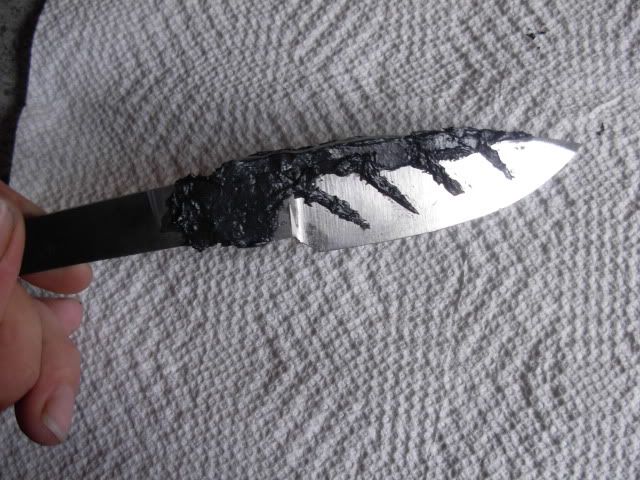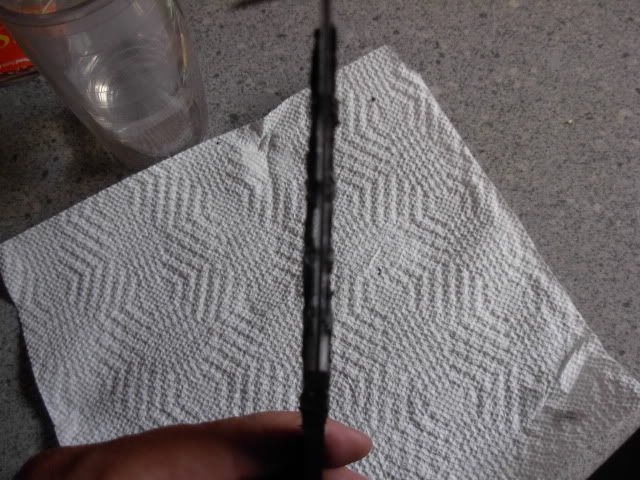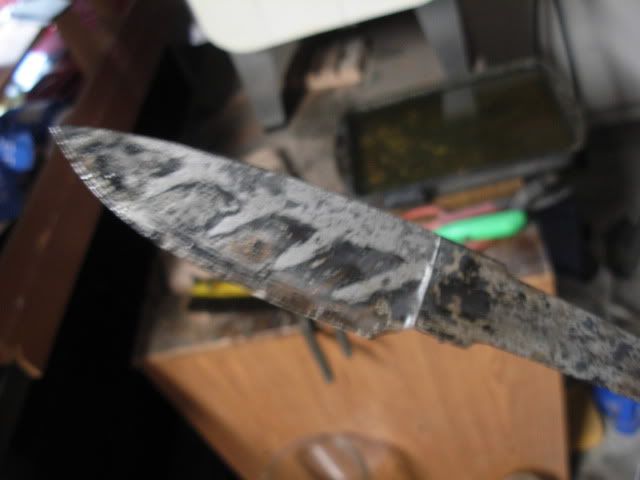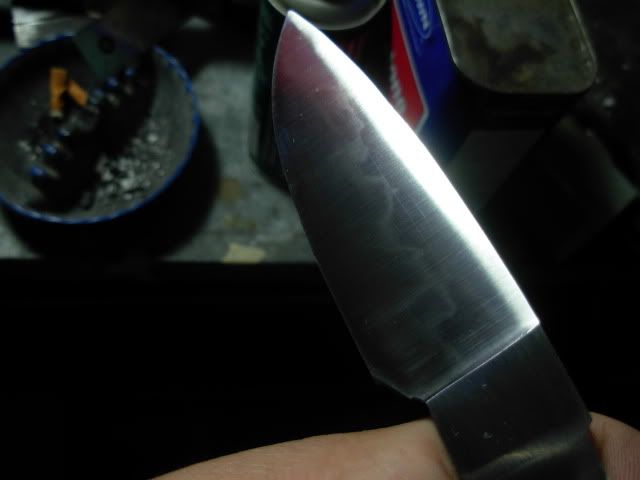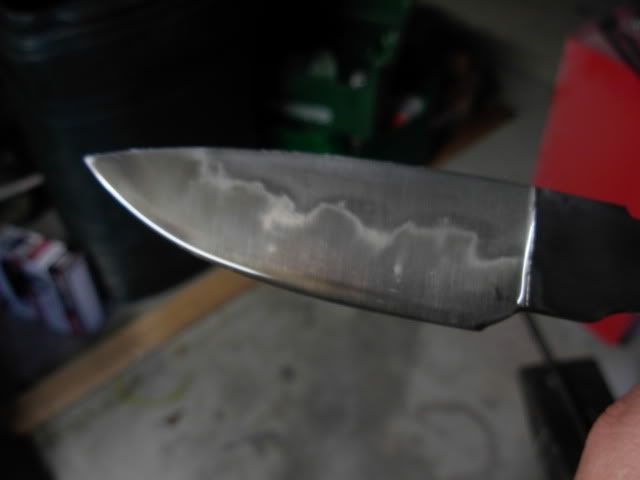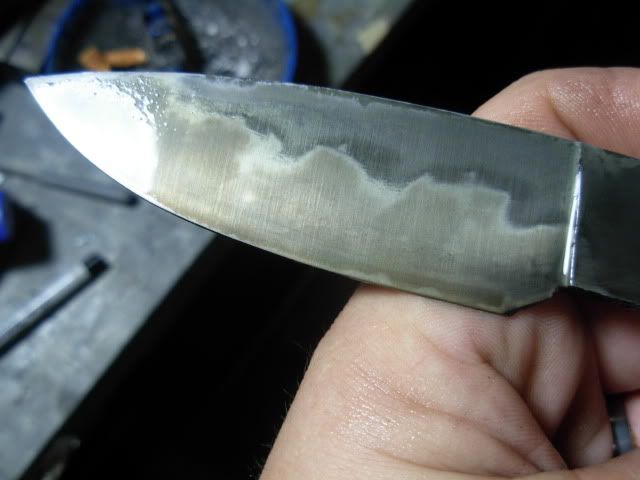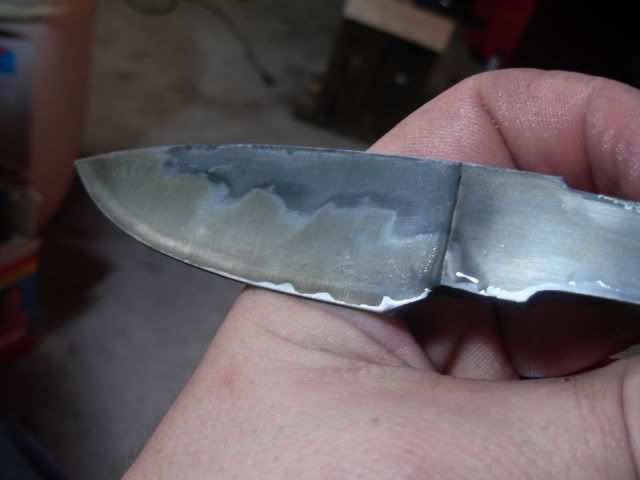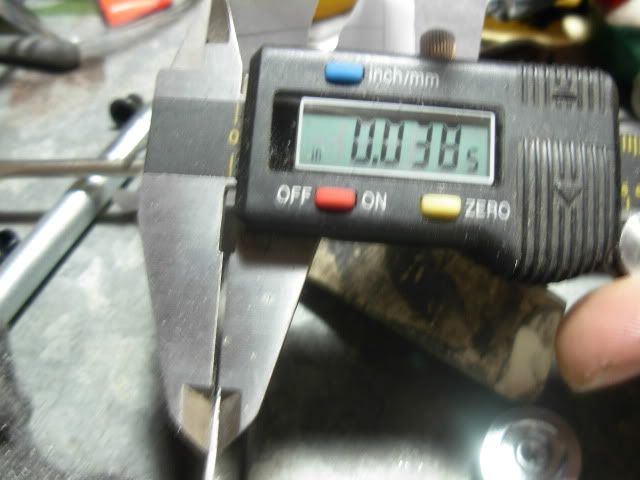murphda2
Super Moderator and KD Blade Show Boss
I haven't been keeping up with this the last few days so I've missed alot. Thank you for the wealth of information gentlemen.
Another thing I've started doing on my blades is to taper the thickness of my ashi lines when I apply them. When using the Rutland cement, I apply it straight from the tube to the spine and spread it to my desired thickness for the blade. When I prepare to apply the ashi lines, I mix it on a pallet like a painter would with paint. I apply drops of water until I get my desired thickness and then apply from the spine down so that the lines taper in both width and thickness.
Another thing I've started doing on my blades is to taper the thickness of my ashi lines when I apply them. When using the Rutland cement, I apply it straight from the tube to the spine and spread it to my desired thickness for the blade. When I prepare to apply the ashi lines, I mix it on a pallet like a painter would with paint. I apply drops of water until I get my desired thickness and then apply from the spine down so that the lines taper in both width and thickness.


